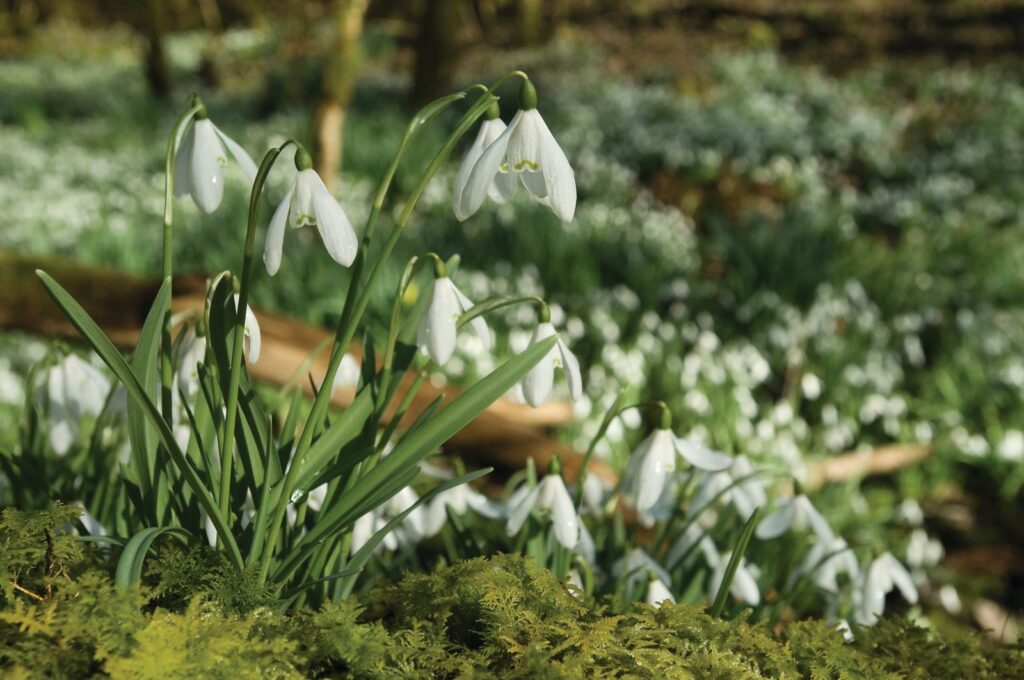
Sisters of the snows
Were snowdrops first brought to Britain by the nuns and monks of medieval abbeys? Phil Gates explores the mysterious origins of spring’s first fair maids
A bright February morning in St John’s Chapel, Weardale, and most of the snow on Chapel Fell has melted away. At first glance, it seems that it still lies in a thick carpet among the gravestones down here in the churchyard, but these are snowdrops: hundreds of dainty white flowers, dancing like ballerinas on their slender stalks. Even the faintest zephyr of wind sends a shiver through their ranks.
Longed-for spring has arrived and the reawakening snowdrops gladden the heart and lift the spirits. It’s a scene repeated in churchyards, ruined monasteries and abbeys the length and breadth of Britain, so familiar that it might seem that these are native wildflowers, residents here when Christianity took root in our islands. This may not be entirely true. But if snowdrops are not a native plant, how did they come to flourish in so many scattered sites across our islands?
MYSTERIOUS ORIGINS
Snowdrops have a natural range that extends across many European temperate countries and into the Near East. The ancient Greek philosopher Theophrastus described bees visiting the blooms on Mount Hymettus, and they were known to St Francis of Assisi in 12th-century Umbria.
In Britain, though, there is no record of snowdrops before 1597, when John Gerard noted in his Herball that they were grown in London gardens. He called them the “timely flouring bulbous violet”, a peculiar name for a white flower, but then ‘violet’ was a common term for a scented bloom. He mentions that they were cultivated for the sweetness of their fragrance; a soft, honey-like aroma when brought indoors, even detectable outdoors on warm spring days where they grow in profusion.

The word snowdrop first appears in print here in 1633 but that, too, might have foreign origins. The Victorian cleric and naturalist Rev Hilderic Friend, writing in 1886 in his Flowers and Flower Lore, advanced the romantic notion that ‘snowdrop’ might be a corruption of the German schneetropfen, meaning ‘pearl earrings’, alluding to the way those snow-white, teardrop-shaped buds dangle like elegant jewellery on their slender stalks.
Snowdrops were first recorded in the wild in the UK in 1778. There is a possibility they might actually be native in south-west England, but this cannot account for their current abundance or distribution, which extends from Cornwall to northern Scotland. They often fail to set seed, because they tend to be self-sterile and there are too few insects in February to cross-pollinate them. They multiply by proliferation of bulbs into bulblets after flowering, so to spread extensively they must either be planted or transported in soil or floodwater. They are often abundant in river valleys, where bulbs are swept downstream in winter torrents and re-establish well in silty riverbank soil.
But why is it that so many magnificent displays are found near ruined abbeys and in old churchyards? This may hold the key to the arrival of the snowdrop on British shores, many centuries ago.
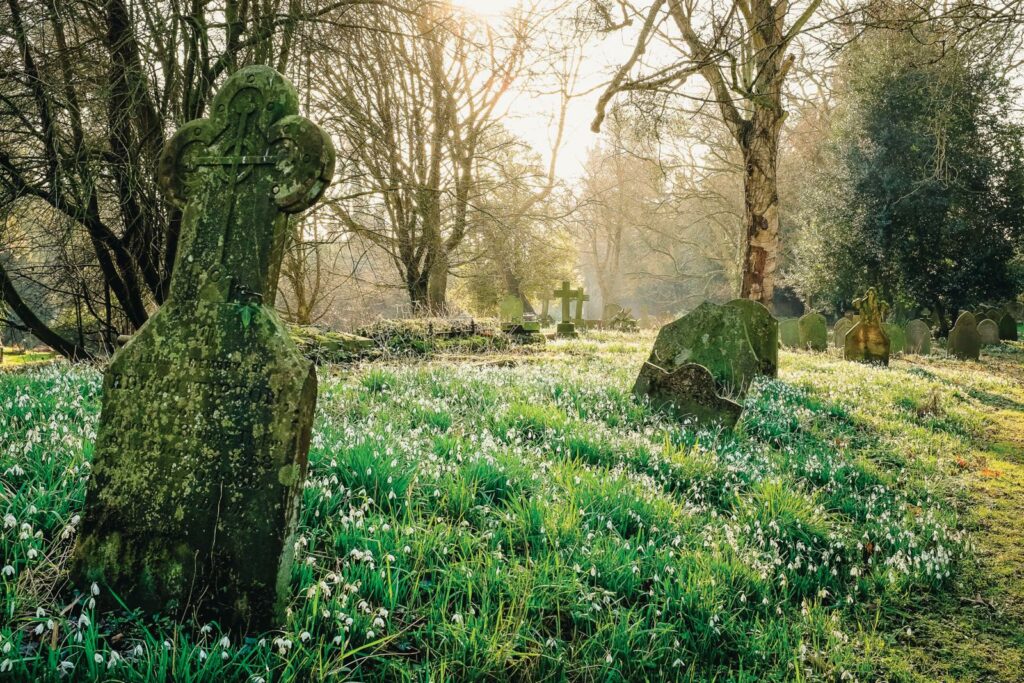
FOR BEAUTY ALONE
Since Roman times, many useful plants have been cultivated around religious settlements in Britain, for food, dyes or medicinal use. Medieval monks planted orchards, grew vegetables in the onion and cabbage family for the kitchen and cultivated aromatic herbs, such as sage and rosemary, to add flavour to food. For centuries, herbal medicine was one of the few practical forms of healthcare: comfrey for healing wounds and broken bones, chamomile as a sedative, hyssop for colds. But in 1597, when John Gerard first described snowdrops, he could find no medicinal “vertues” to list in his Herball. “Touching the faculties of these bulbous Violets we have nothing to say, seeing that nothing is set down hereof by the antient Writers, nor any thing observed by the modderne, only they are maintained and cherished in gardens for the beauty and rarenesse of the floures,” he wrote.
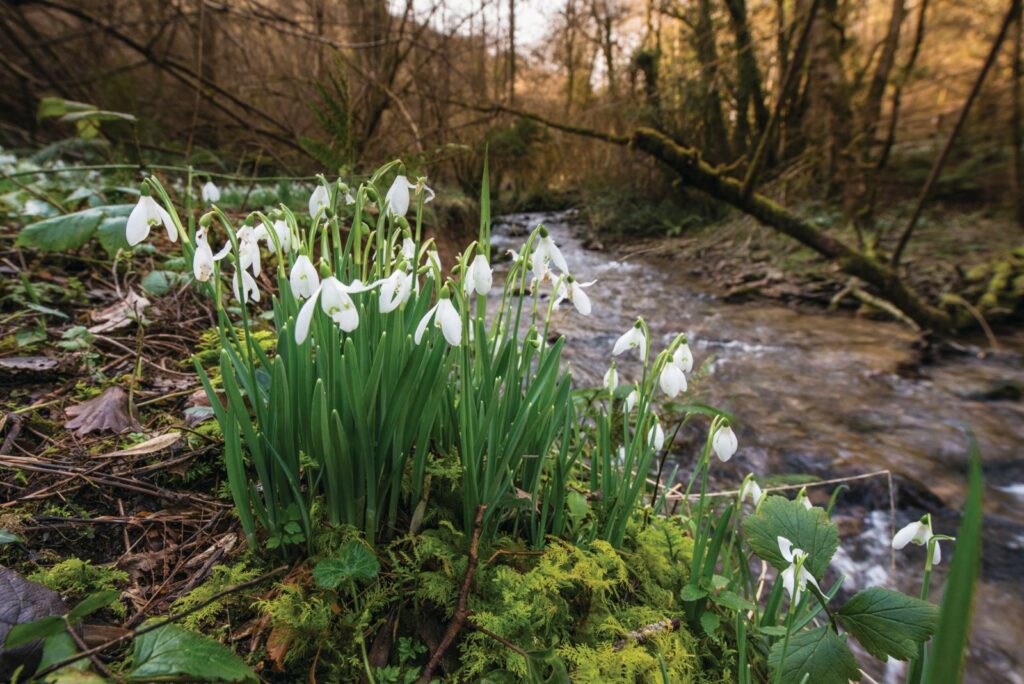
In 1735, the Swedish taxonomist Carl Linnaeus gave snowdrop its scientific name, Galanthus nivalis, the ‘milk-flower of the snow’, emphasising its white, virginal purity. Evidently, snowdrops’ ancient association with religious establishments was similarly symbolic; they had become part of the celebration of Candlemas, the Feast of the Purification of the Blessed Virgin Mary, which falls on 2 February when they are in full bloom.
What might have begun with planting a few bulbs for flowers to place on an altar could, in time, have led to the drifts of snowdrops we so admire today. These early bloomers are well-suited to cultivation in grass that is mown or grazed in churchyards. Their foliage has sufficient time to flourish and form next year’s bulbs, multiplying and swelling underground before grass needs to be cut in spring. Additionally, they are poisonous, so tend to be avoided by rabbits and other grazers.
CHASTE REFUSAL
Today, snowdrops in spring are a welcome sight, but in prim Victorian society, when they were often called ‘February fair maids’ and were emblems of chastity, they could bring disappointment for romantic young men. That was the heyday of cryptic interpersonal communication via the ‘language of flowers’, when a snowdrop arriving in the post from a young lady would mean rejection for an unwanted suitor. In the delicate circumlocution of Rev Hilderic Friend, in his 1886 Flowers and Flower Lore, snowdrops “are sacred to virgins, and we have known a gentleman even in these days warned against fixing his affections on a lady, by her simple device of enclosing a few snowdrops in an envelope and forwarding it to him”. A message from her to cool his ardour and encourage him to look elsewhere.
SNOWDROPS: SYMBOLS OF LIFE AND DEATH
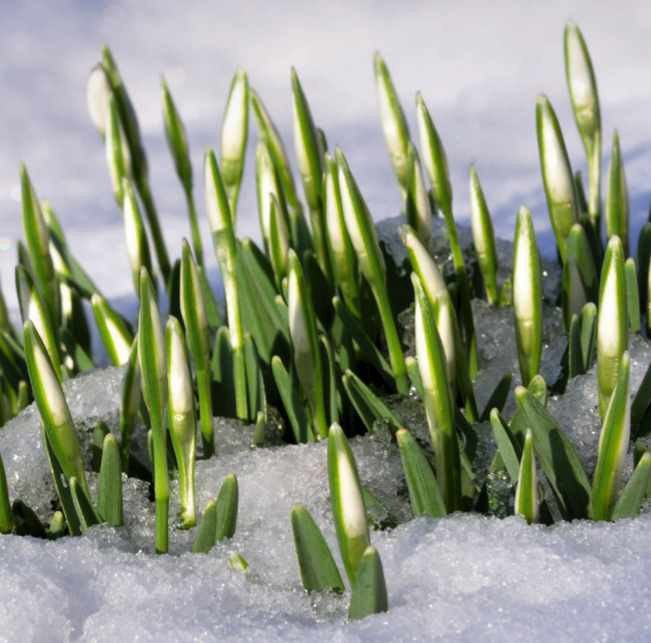
Hard-tipped snowdrop leaves piercing frozen soil in a churchyard are a welcome symbol of renewal at the end of a long, hard winter, but their association with tombs and cemeteries created another, alternative perception in morbid Victorian minds. As people wandered among drifts of snowdrops and headstones inscribed with names and life spans of the dear departed, their thoughts turned, inevitably, to human mortality and of the relentless passing of the years. As William Wordsworth recognised, in his poem ‘To a Snowdrop’: Chaste snowdrop, venturous harbinger of spring And pensive monitor of fleeting years! Most of us would welcome the gift of a posy of snowdrops but, in the past, in some superstitious rural communities, it was considered unlucky to bring them into a house. They were known as death’s flower, because the unopened bud bore a resemblance to a corpse enclosed in a white shroud.
SNOWDROP HOTSPOTS TO VISIT
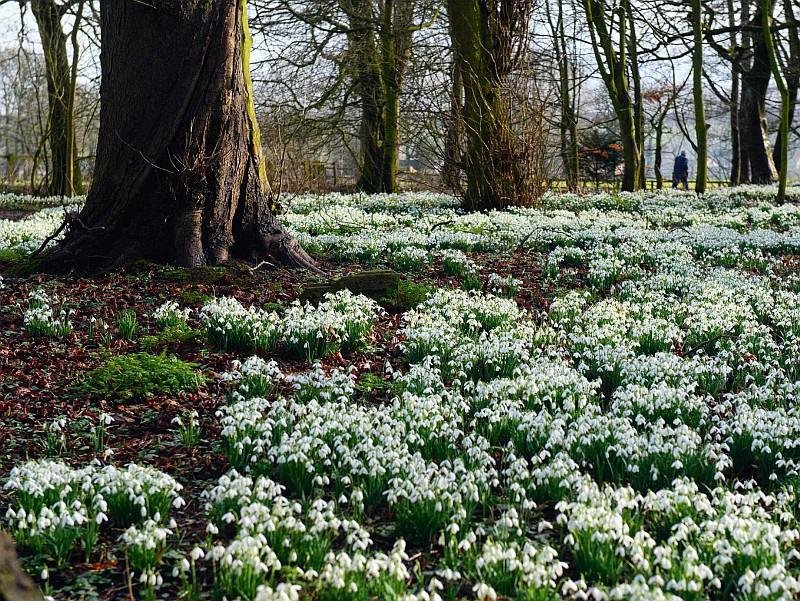
Burton Agnes Hall and Gardens, near Driffield, Yorkshire The gardens of this magnificent Tudor manor are noted for their breathtaking display of snowdrops and legendary snowdrop walk. burtonagnes.com
The Church of St George, Dameram, Hampshire Drifts of snowdrops in the picturesque churchyard surround the Norman church, which holds a Snowdrop Weekend, offering cakes, tea, coffee and bulbs for sale, in mid-February. dorsetview.co.uk
Shaftsbury Abbey, Dorset Founded for women in AD888 by King Alfred the Great, on a hill with views over
Blackmore Vale, the abbey was destroyed by Henry VIII in 1539, so only the foundations and snowdrops survive. There is a threemile snowdrop walk around the town. shaftesburysnowdrops.org
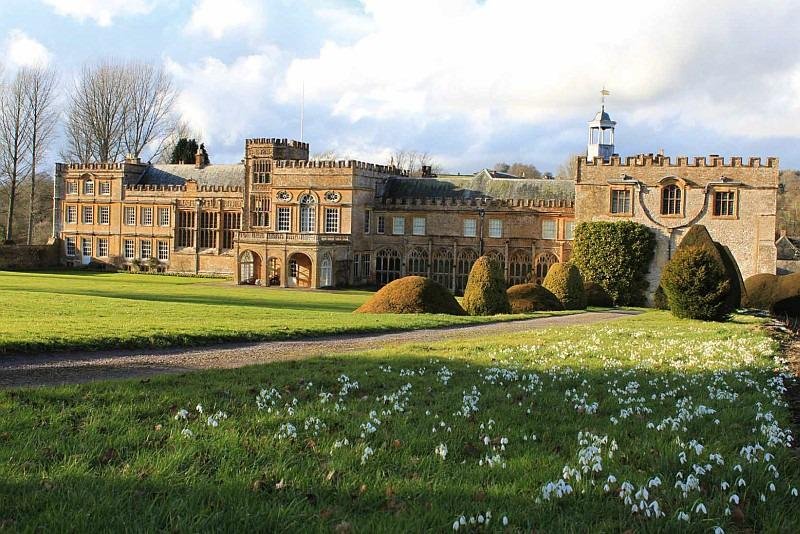
Forde Abbey, Chard, Somerset This beautifully preserved 900-year-old former Cistercian abbey was a movie location for Hollywood’s adaptation of Thomas Hardy’s Far from the Madding Crowd. Surrounded by 12 hectares of gardens carpeted with snowdrops, it opens for snowdrop weekends in February. fordeabbey.co.uk
Greyfriars Monastery, Dunwich, Suffolk Established by Franciscan monks in the late 13th century, Greyfriars Monastery on the Suffolk coast is now in ruins. Nearby Greyfriars Wood is rich in wildlife and noted for its drifts of snowdrops and daffodils. dunwichgreyfriars.org.uk
St James’ Church, Hamsterley, Weardale, County Durham This tiny 13th-century church on a hilltop outside the village has a walled churchyard filled with snowdrops in spring, and offers magnificent views to the east over the river Wear valley. achurchnearyou.com
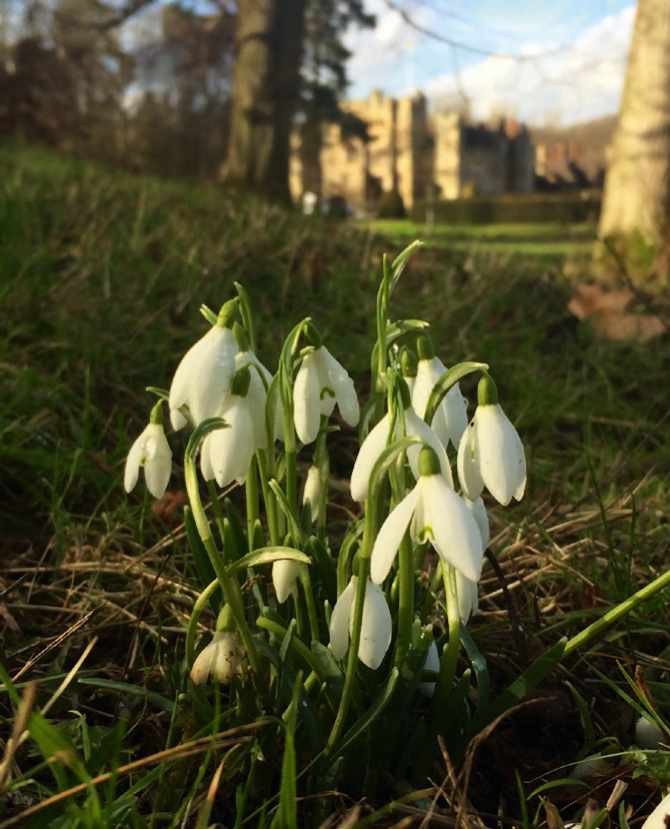
Hever Castle, Edenbridge, Kent The childhood home of Anne Boleyn, Henry VIII’s second wife, Hever Castle was later owned by his fourth wife, Anne of Cleves. The grounds feature extensive plantings of snowdrops, including many unusual cultivars. The snowdrop walk is open from 8 February onwards. hevercastle.co.uk
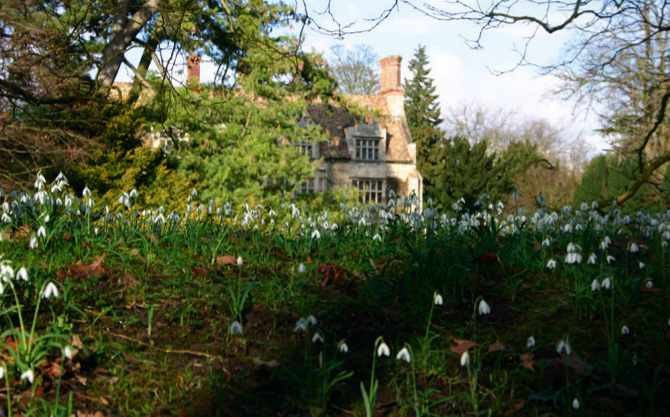
Anglesea Abbey, Cambridgeshire Originally home to Augustinian monks in the 13th century, Anglesea Abbey has one of the finest collections of snowdrops in Britain, with more than 200 varieties planted in its grounds. nationaltrust.org.uk
The Bishop’s Palace, Wells, Somerset Home to the Bishops of Bath and Wells for more than 800 years, the palace boasts a glorious display along the Snowdrop Walk, on the banks of the moat and on the path to the arboretum. Snowdrop Weekends run during February. bishopspalace.org.uk
Walsingham Abbey, Little Walsingham, Norfolk The spectacular ruins of the Augustinian priory of Our Lady of Walsingham, which has a long history of religious pilgrimage, are surrounded by seven hectares of woodland that dance with drifts of snowdrops in early spring. walsinghamabbey.com
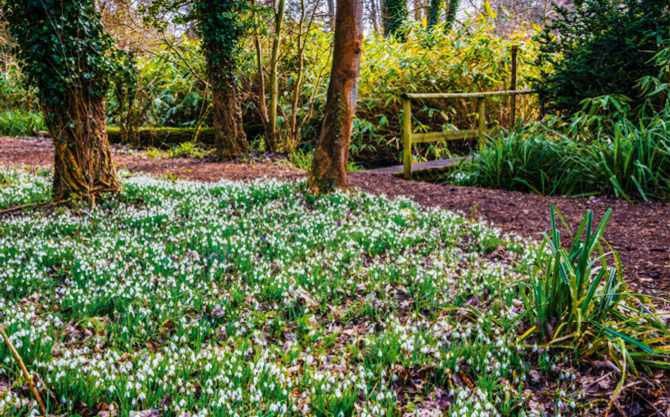
Welford Park, Newbury, Berkshire The site of a Norman monastery, dissolved by Henry VIII, Welford Park is now famed for its snowdrops, which grow in drifts through woodlands, along riverbanks and among avenues of lime trees. A galanthophile’s paradise throughout February. welfordpark.co.uk
Church of St Mary with Fenwick and Moss, Kirk Bramwith, South Yorkshire Noted for its carvings by ‘mouseman’ Robert Thompson, this 800-year-old church is located in a tiny hamlet six miles north-east of Doncaster. Snowdrops carpet its churchyard; the annual snowdrop festival, with refreshments, is held on February weekends. achurchnearyou.com
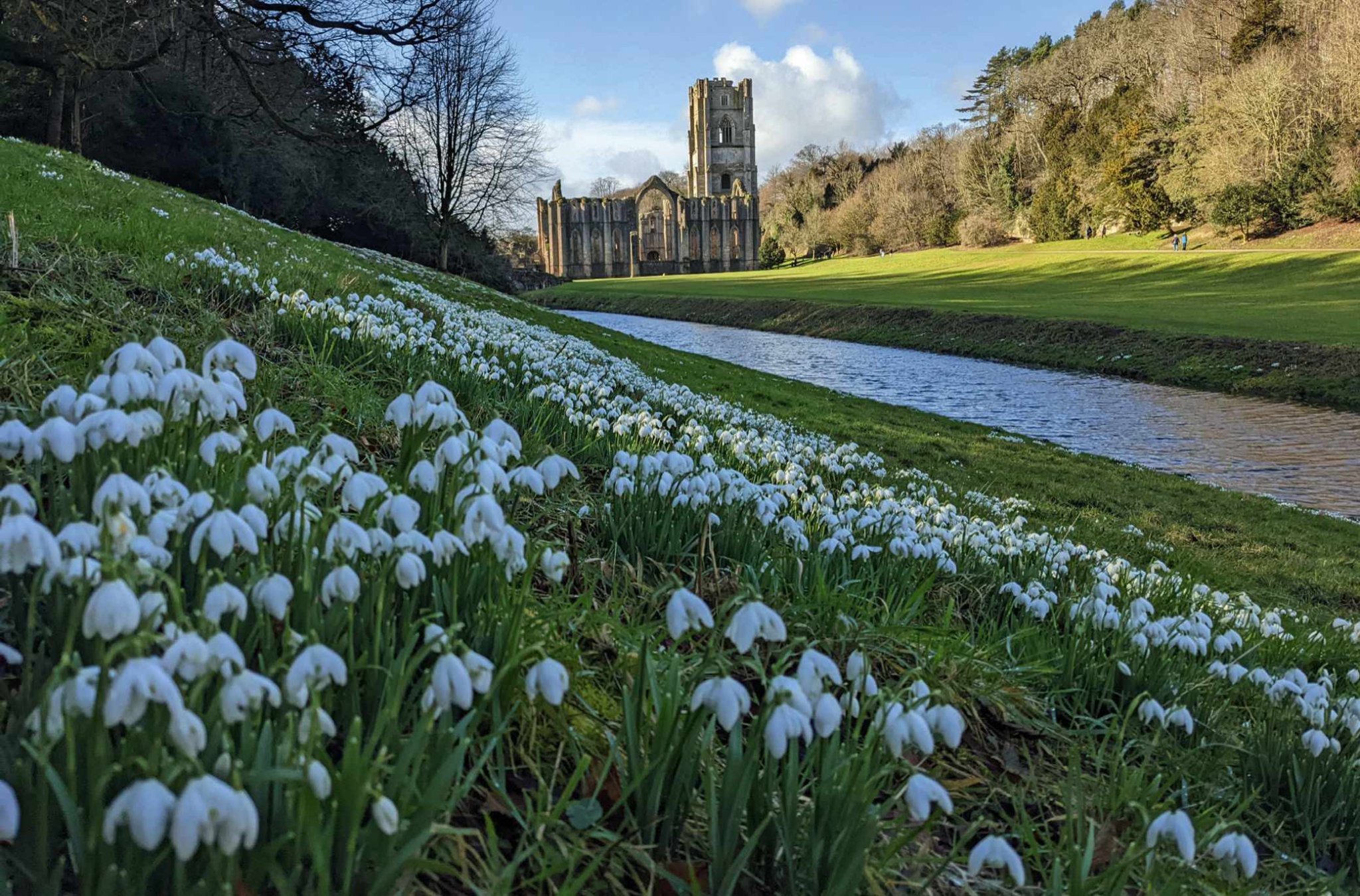
Fountains Abbey, Ripon, North Yorkshire A World Heritage Site, the ancient ruins of the original abbey are surrounded by stunning grounds. The snowdrops were first planted over 100 years ago by the Earl de Grey. nationaltrust.org.uk
Rode Hall, Scholar Green, Cheshire Rode Hall is famed for one of the most spectacular snowdrop displays in northwest England. Enjoy snowdrop walks during February through a Humphrey Repton landscape. The parish church of All Saints, Old Rode, is decorated with snowdrops in season. rodehall.co.uk
St Oswald’s Parish Church, Ashbourne, Derbyshire This magnificent 13th-century church has a churchyard filled with snowdrops in February and is managed as a wildflower meadow for the rest of the year. ashbournechurch.org.uk
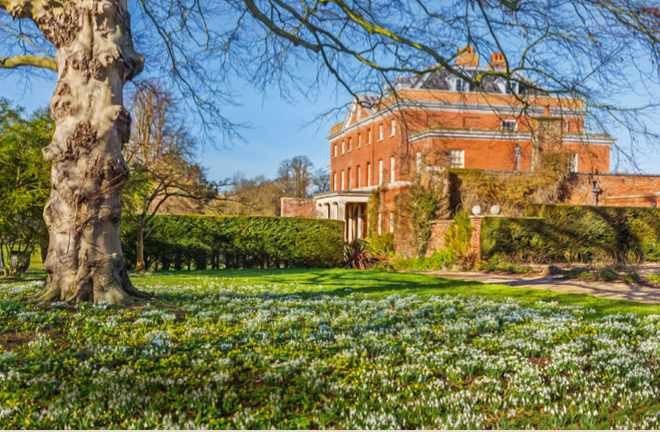
Raveningham Estate, Norwich Extensive gardens that open annually with a special snowdrop event in February, with over 150 named cultivars on display. Proceeds in aid of the Priscilla Bacon Hospice. raveningham.com
Howick Hall Gardens and Arboretum, Alnwick, Northumberland The family seat of the Grey family, home of Earl Grey tea. Informal, naturalistic gardens and enticing paths lead through the arboretum down to the Northumberland coast, opening in February when drifts of snowdrops come into bloom. howickhallgardens.com
Cambo gardens, Kingsbarns, Saint Andrews, Fife Scotland’s largest collection of snowdrop varieties is housed in Cambo’s walled garden, while swathes of naturalised snowdrops flower in the woodland garden that leads down to the sea. The Scottish Snowdrop Festival runs here from 25 January to 11 March. cambogardens.org.uk
Benington Lordship, Nr Stevenage, Hertfordshire Opened every year in February, the gardens are carpeted in a spectacular display of naturalised snowdrops around the remains of the Norman keep. A snowdrop walk is planted along the wall at the top of the moat. beningtonlordship.co.uk
RHS Rosemoor, Great Torrington, Torrington, Devon This holds a celebration of snowdrops from 1–13 February. Follow the snowdrop trail or take advantage of free guided walks with expert advice on cultivating these harbingers of spring. rhs.org.uk/gardens/rosemoor

Phil Gates is a naturalist who writes for the The Guardian’s Country Diary. He lives in County Durham and for many years was the senior lecturer in botany at Durham University.